How to decorate heating pipes
Modern heating pipes do not spoil the interior. They can be built into special niches, hidden in wall panels or floor coverings. In some homes, the heating system is simply not available. What should be done for those who have a standard heating system in their house, installed since Soviet times. Such radiators not only do not fit into the interior, but also spoil the appearance of the room. How to decorate the heating pipe? In fact, it is not so difficult. It is enough just to show imagination and ingenuity.
When it is necessary to decorate the heating system in a residential area:
- if the pipes of the heating system are located under the ceiling;
- overhanging radiators of large sizes are used.
Special features
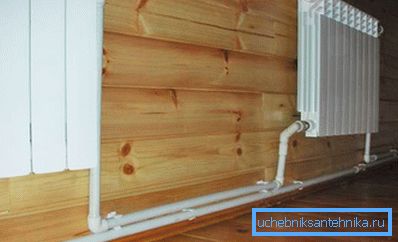
Before you decorate your own heating pipes, you need to consider the main features and nuances of the work:
- Do not completely hide the communication system. In the event of a pipe break, it will be difficult to repair them. It will also be difficult to completely replace parts of the pipeline with new ones.
- After the decorative closure of the risers by ducts, their level of heat transfer will decrease. This will reduce the air temperature in the room.
- If the heating pipe is completely recessed into the wall, a large area of thermal conductivity will occur. This, on the contrary, will lead to an increase in the level of heat in the room.
- When closing radiators with decorative boxes do not forget about the natural ventilation of the air. The box must be equipped with a ventilation grille, which ensures the natural circulation of air flow.
- Decorative boxes must be made of prefabricated structures. In this case, it will be possible to replace parts of the heating system, repair and clean its radiators.
Ways
Among the most common methods of decorating the pipes of the heating system in a room are the following:
- Installation of pipes in wall panels, floor or ceiling surface.
- The use of special boxes and panels.
- Decorative decoration.
The heating system can be a bright decoration of the room.
Pipe masking
One of the most popular ways of decorating is to install the pipes of the heating system in the wall, floor or ceiling. Thus, the heating system will be completely hidden from view.
Tip! Soviet-style pipes should not be installed in the wall. Polypropylene or metal-plastic pipes are best suited.
Stages of work
- Conducting markings and piping layouts.
- In the places of laying of pipes in the wall are made recesses. When calculating the dimensions of the recesses, it is necessary to take into account the thickness of the insulating material and the material for the sealing of pipes.
- To ensure that the pipes are securely fastened to the wall, holes are made in the grooves with dowels and brackets.
- If pipes from metal-plastic are used, they must first be fitted with a special casing. It will ensure the preservation of heat in the pipes and prevent its loss.
- Removable fittings must not be walled into the wall.
- The pipes are placed in a special casing and mounted in the wall. It is necessary to prevent heat loss.
- Check the operation of the system. After the system has been tested, the gate must be closed with a special solution.
- At the places where the pipes enter the floor it is necessary to install decorative covers.
They are presented in the photo:

Using special boxes and panels
With the decorative masking of pipes and radiators, special boxes are becoming increasingly popular. They can be made independently or purchased in a specialized shop.
Making box
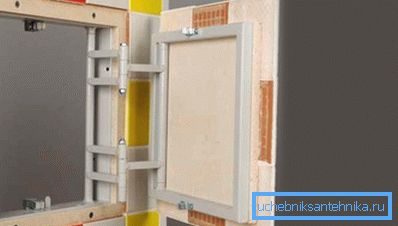
The decorative box can be made of the following materials:
- plastic,
- tree,
- drywall
- PVC panel.
For the manufacture of decorative boxes will require the following materials:
- scissors,
- measuring instruments
- self-tapping screws
- dowels,
- drill,
- cladding material
- knife,
- screwdriver
- prosekatel.
Stages of work:
- The markings around the pipes regarding their location on the ceiling, wall and floor. Also it is necessary to take into account the size of the materials, the distance of the pipes to the walls of the box. It is not necessary to fix the box close to the pipes. It is necessary to maintain at least a minimum distance between them, which is 3 cm.
- The box is mounted on a special frame. First you need to install it. The frame can be made of wooden planks or metal profile. The frame parts are interconnected by means of screws and sifters.
- Installing rack profiles on the wall.
- Fastening the guides on the floor.
- Installation of guides on the ceiling.
- Installation of angular profiles. Depending on the design, they can be 1 or 2.
- Facing frame. You can use drywall panels or decorative tiles. When facing it is necessary to watch that formed as little as possible joints.
There are ready-made boxes for radiators. They are presented in the photo:
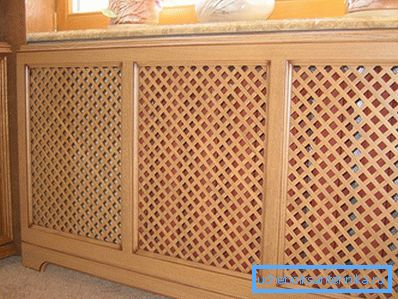
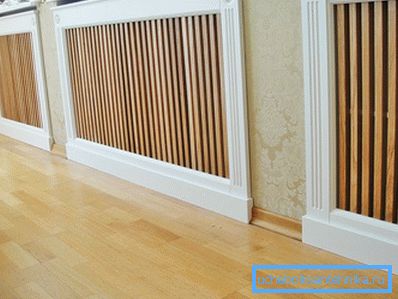
Use of plastic panels
Another affordable way to decorate the heating system. The method consists in the fact that the pipeline is not hiding in a special box, but with the help of drywall a false wall is made, behind which the heating system is completely hidden. This method is bad because it takes up extra space in the room. This is not very appropriate in conditions of small-sized residential premises.
The advantage of this method is that when mounting a wall panel inside it, a peculiar box is formed, the empty space of which can be used for economic purposes.
Using drapes
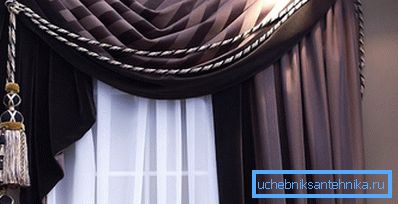
This method does not require special construction skills. It lies in the fact that the heating system in the room is closed by curtains. This gives the room a cozy and unique design.
- Over the entire width of the wall it is necessary to install a ceiling cornice.
- Installing thick curtains across the entire width of the wall. Closed drapes close the heating system. If necessary, they can be opened to transmit sunlight.
Decorative ornament
All the above methods are quite expensive. An excellent alternative to them is the decoration and decoration of heating pipes with their own hands. There are no restrictions here.

This method is particularly relevant for decorating the heating system in the kitchen. Decorated pipe will be a cozy part of the kitchen interior.
Ways to work:
- painting,
- decoration,
- surface closure with unusual materials.
Painting
When painting pipes of heating it is necessary to consider the following requirements to materials:
- moisture resistance
- wear resistance
- damage resistance
- endurance to temperature changes
- safety for human health.
To paint the pipes of the heating system, you can use water-based paints, acrylic paints and alkyd enamels.
It is optional to paint pipes in monophonic color. An interesting solution would be to apply a pattern and a pattern on the pipe.

You can decorate the heating pipe with any decorative materials.
An example of materials used for decorating:
- beads,
- buttons,
- tapes,
- shoelaces
- rope,
- twine,
- thread,
- floss
- knitting yarn
- textile.
A simple example of a decorative solution is a twine twisting. Its pleasant wood color will fit well into any interior and create an atmosphere of comfort. To make the decoration in this way, it is enough just to tightly wrap the pipe with a string and fasten it.
You can also use additional decorative elements in the design. So, on the pipe entwined with twine, you can fix decorative foliage. Thus, the heating pipe will turn into a tree.
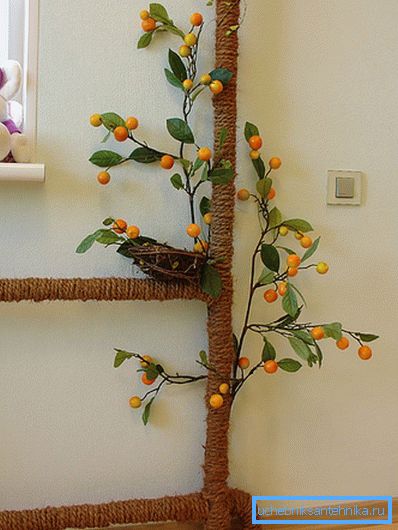
- Decorating with bamboo. This noble natural material will look advantageous in any room. Its shape perfectly fits the shape of the pipe.
You can also decorate the heating pipes with any available materials.
A photo
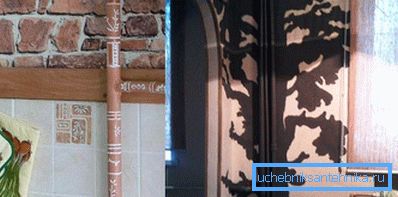
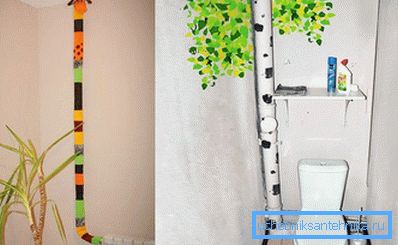
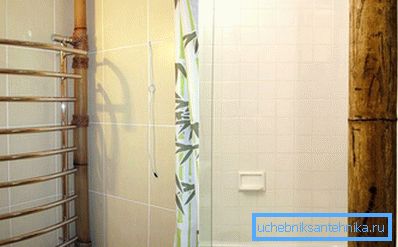

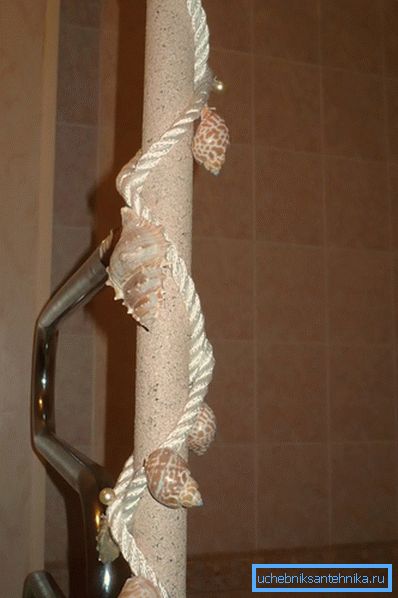
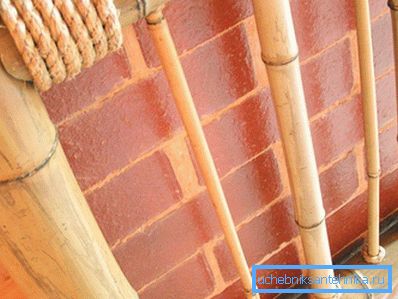
Video
We offer you another idea of the decoration of pipes.